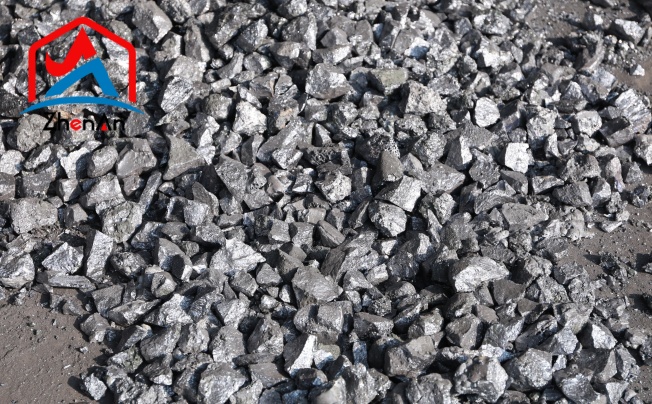Silicone, a remarkable and versatile material, has become an indispensable component in numerous industries due to its exceptional properties. This synthetic polymer, composed of silicon, oxygen, carbon, and hydrogen atoms, possesses a unique capability to withstand extreme temperatures while maintaining its flexibility and durability.
Silver Silicone
Integrating Silver into Silicone
Silver silicone, also known as conductive silicone, is created by incorporating silver particles or flakes into the silicone matrix during the manufacturing process. These silver additives are mixed with liquid silicone rubber before it is cured to form the final material. The silver content can vary depending on the desired properties of the end product, with higher concentrations typically resulting in greater conductivity.
The Unique Properties of Silver Silicone
Compared to traditional silicones, silver silicone offers a range of unique characteristics that make it an ideal choice for specialized applications. One of its standout features is enhanced conductivity, which allows for efficient electrical transmission. This property makes silver silicone particularly well-suited for use in electronic components such as flexible circuits and sensors where reliable conductivity is essential.
Enhanced Conductivity and Antibacterial Properties
The enhanced conductivity of silver silicone not only facilitates its use in electrical applications but also opens up new possibilities in various industries. In the electronics sector, silver silicone enables the development of advanced products like wearable technology and smart textiles that require flexibility coupled with high electrical performance.
Furthermore, its antibacterial properties make it a valuable material for medical and healthcare applications where preventing infections is crucial. Silver's natural antimicrobial qualities help inhibit bacterial growth on surfaces coated with silver silicone, making it ideal for medical devices and wound dressings that require a sterile environment to promote healing.
Applications of Silver Silicone
The Silver Lining in Electronics
The integration of silver into silicone matrices enhances conductivity, making it ideal for applications requiring flexibility and durability. Flexible circuits made with silver silicone can bend and conform to various shapes without compromising performance, opening up possibilities for innovative electronic devices that were previously unattainable.
Furthermore, silver silicone's exceptional thermal management properties make it a sought-after material in the electronics sector. Electronic devices generate heat during operation, which can affect performance and longevity.
By incorporating silver silicone in the design of electronic components, manufacturers can improve heat dissipation and ensure optimal thermal regulation. This not only enhances the reliability of electronic devices but also prolongs their lifespan, addressing a critical issue in the industry.
Healing with Silver
In the healthcare sector, silver silicone plays a crucial role in advancing medical technology through its antimicrobial properties. Medical devices and implants coated with silver-infused silicone exhibit antibacterial effects, reducing the risk of infections associated with surgical procedures or implantation.
This is particularly significant in preventing post-operative complications and improving patient outcomes by minimizing the likelihood of infections caused by microbial contamination on medical equipment. Moreover, wound dressings incorporating silver silicone have emerged as a revolutionary solution for promoting healing and preventing infection in patients with wounds or ulcers.
The antibacterial properties of silver effectively inhibit the growth of harmful microorganisms on wounds, creating an optimal environment for tissue regeneration and accelerating the healing process. Silver-infused wound dressings are increasingly being utilized in healthcare settings to address challenging cases where standard treatments may be insufficient, showcasing the potential impact of this innovative technology on patient care.
The Art of Infusing Silver into Silicone
The manufacturing process of silver silicone involves a meticulous procedure to ensure the proper integration of silver particles into the silicone matrix. Typically, silver nanoparticles or compounds are added to the liquid silicone material during its formulation stage.
This step requires precise measurements and controlled conditions to guarantee a homogeneous distribution of silver throughout the silicone mixture. The mixing process is crucial in achieving a consistent dispersion of silver within the polymer matrix, which ultimately determines the material's conductivity and antibacterial properties.
Challenges in Crafting Silver Silicone
Despite its remarkable properties, manufacturing silver silicone poses several challenges that must be addressed to maintain quality and efficiency. One major hurdle is ensuring uniformity in the distribution of silver particles within the silicone matrix.
Variations in particle size or concentration can result in inconsistencies across batches, affecting the material's performance characteristics. Additionally, controlling the curing process is critical as improper curing can lead to defects such as voids or delamination within the material, compromising its integrity.
Advantages and Limitations
The Benefits of Silver Silicone
Silver silicone offers a plethora of advantages that make it a highly desirable material in various industries. One notable benefit is its exceptional durability, which ensures longevity and reliability in applications where longevity is crucial.
Additionally, silver silicone exhibits remarkable flexibility, allowing it to conform to different shapes and surfaces without losing its structural integrity. This flexibility makes it ideal for use in products requiring malleability and adaptability.
Moreover, silver silicone's biocompatibility is a significant advantage, particularly in the healthcare sector. Its compatibility with biological systems reduces the risk of adverse reactions when used in medical devices or implants, enhancing patient safety.
Addressing the Challenges
Despite its many advantages, silver silicone also comes with certain challenges that need to be considered. One notable challenge is the cost implications associated with incorporating silver into silicone compounds.
Silver is a precious metal, and its addition can significantly increase production costs, making silver silicone products more expensive than traditional silicones. Furthermore, limited availability of high-quality silver can pose challenges in ensuring consistent supply for manufacturing processes.
This scarcity may lead to fluctuations in prices and availability, affecting production timelines and pricing strategies. Another potential concern relates to environmental considerations due to the use of silver nanoparticles in silver silicone products.
While research is ongoing to understand the environmental impact of these materials, there are concerns about their potential long-term effects on ecosystems if not managed properly. While silver silicone offers numerous benefits such as durability, flexibility, and biocompatibility that make it an attractive choice for various applications, there are challenges that need to be addressed.
The high cost associated with silver incorporation can impact affordability and market competitiveness for products using this technology. Additionally, limited availability of quality silver may pose supply chain risks for manufacturers relying on this material.






